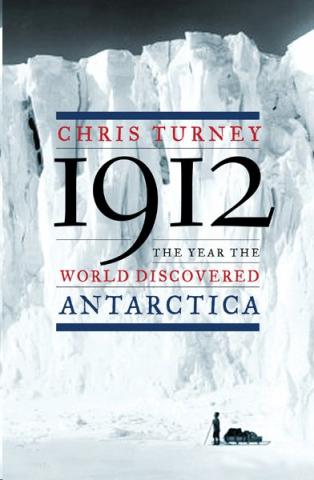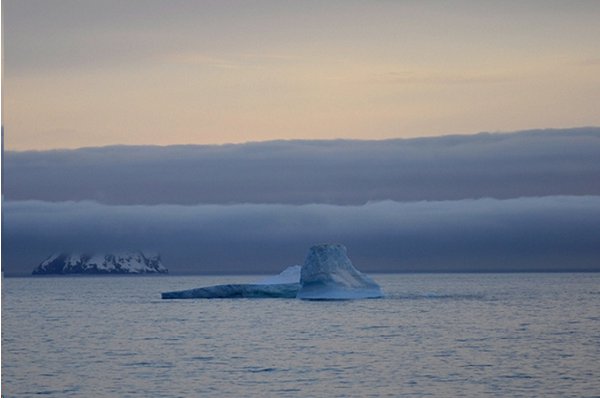Polar Explorers’ Glory and Ordeals Celebrated in Chris Turney’s ‘1912’

1912: The Year the World Discovered Antarctica
By Chris Turney
Counterpoint
356 pages
Here are some facts about Antarctica that may not be general knowledge, as noted by climate change scientist and author Chris Turney:
Antarctica is second only to Russia in coverage of the Earth’s surface. It is larger than all the countries of Europe combined. It contains more than 70 percent of the world’s freshwater, “which, if melted, would raise the planet’s seas by an estimated 65 meters, easily flooding the likes of Sydney, London and New York.”
These facts have been known to science for less than 200 years. Antarctica’s landmass was first sighted in 1820, with landfall occurring a year later. “Even the Ellsworth Mountains, where I was working in early 2011, were not explored properly until the 1960s.” Considering how thoroughly the planet had been explored and colonized up to that point, this is a remarkably brief timespan.
1912: The Year the World Discovered Antarctica chronicles the polar expeditions that laid the groundwork for our present-day knowledge of this vast, ice-bound continent. In addition to reprising the famous “race to the pole” of explorers Robert Scott and Roald Amundsen, Turney describes lesser-known South Polar explorers who also braved mind-boggling conditions in pursuit of science and glory. These include expeditions led by Nobu Shirase of Japan, which unearthed scientifically significant volcanic rock samples; Wilhelm Filchner of Germany, whose efforts resulted in important advances in oceanography; and Douglas Mawson’s joint Australian/New Zealand foray, which “gave the world its first complete scientific snapshot of the new continent.”
Of greatest interest to the reader are the small details of the explorers’ daily life and accounts of animal behavior largely unknown to science at that time. Scott, for example, writes of first encounters with penguins:
“From the moment of landing on their feet their whole attitude expressed devouring curiosity and a pig-headed disregard for their own safety. They waddle forward, poking their heads to and fro in their usually absurd way, in spite of a string of howling dogs straining to get at them. ‘Hulloa!’ they seem to say, ‘here’s a game—what do all you ridiculous things want?’”

Turney describes the explores’ challenge of simply getting a good night’s sleep: “The reindeer-fur-lined sleeping bags were awful: the fur became moist from the sleeper’s breath, which froze solid when the bag was vacated, forcing the men to re-enter an ice-filled bag the next time, a process that sometimes took up to three-quarters of an hour.”
And, of course, there’s the age-old problem of people co-existing together:
“Never had men been left so far south alone. To the young members of Shackleton’s expedition, Antarctica must have seemed otherworldly. The vastness of the landscape, coupled with the extreme swings of light, temperature and sound, could unsettle the strongest of characters. Now they also had to deal with physical isolation from the outside world—and proximity to each other.”
Turney quotes the scientist Thomas Huxley: “How utterly disgusted you get with one another! Little peculiarities, which would give a certain charm and variety to social intercourse under any other circumstances, become sources of absolute pain, and almost unaccountable irritation, when you are shut up with them day and night. One good friend, a messmate of mine, has a peculiar laugh, whose iteration on our last cruise nearly drove me insane.”
The book’s title is a bit misleading, in that Turney devotes considerable space in the early chapters to southern exploration well before 1912. And though finding money to pay for these ambitious expeditions was a tiresome fact of life for these scientist-adventurers, after a while his descriptions of their fundraising efforts in late Victorian and Edwardian England take on a certain sameness. But the detailed accounts of the expeditions themselves more than reward readers fascinated with the terrible effects of life under these staggering conditions—from starvation and frostbite to being rendered snow-blind and snow-mad.
Turney says he wanted to show “how 1912 heralded the dawn of a new age in our understanding of the natural world.” In this, he thoroughly succeeds.
Author Bio;
Lee Polevoi, Highbrow Magazine’s chief book critic, is a freelance writer based in Southern California.
Photo: Victor, Flickr (Creative Commons).































































































































































































































































































































